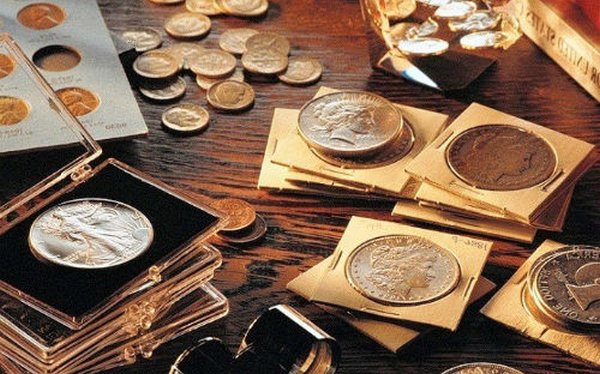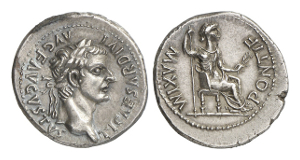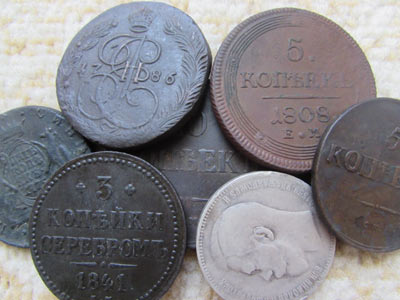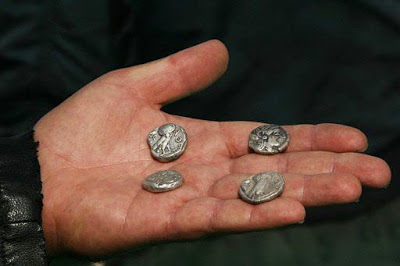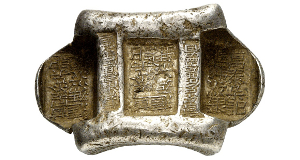Byzantine coins (ca. 500-1453)
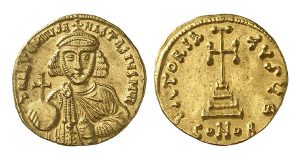 The fall of the Roman Empire was in the late Middle Ages, at least in the east of Europe. After the death of Emperor Theodosius I in 395, the Roman Empire was divided into two parts, and in its eastern part a “Byzantine Empire” was formed, the name of which comes from the original name of the capital “Byzantium”. At the same time, the “Byzantine” empire became known only in the historical science of modern times. The Byzantines themselves always considered and called themselves “Romans” and never “Byzantines”.
The fall of the Roman Empire was in the late Middle Ages, at least in the east of Europe. After the death of Emperor Theodosius I in 395, the Roman Empire was divided into two parts, and in its eastern part a “Byzantine Empire” was formed, the name of which comes from the original name of the capital “Byzantium”. At the same time, the “Byzantine” empire became known only in the historical science of modern times. The Byzantines themselves always considered and called themselves “Romans” and never “Byzantines”.
From 330 to 1453, the capital of the Byzantine Empire, originally founded as “New Rome” (Νέα ̔Ρώμη) (later renamed Constantinople), was not only the residence of the emperor of the Eastern Roman Empire, but also served as a kind of bridge between the cultures of the medieval East and West, due to its location in the Bosphorus. Not later than the time of the Great Schism, the split of the Christian church in 1054, the city also became the center of Orthodoxy.
The history of the coins of the Byzantine Empire dates back to the monetary reforms of Emperor Anastasia I (491-518), which were held for about 500 years. Justinian I (527-565) continued to work on the organization of monetary business, and the structure created in its basic features remained until the VIII century. Byzantine coins were made of three types of metal. In gold, coins of three denominations were issued — solid, semis, and triense; in silver, coins of two denominations of miliary and silicic; and in copper, five denominations — 1 num, 5, 10, 20, and 40 num. In the 7th century, the number of mints that issued Byzantine coins was greatly reduced. Coins were minted not only in Constantinople, but also in Rome, Ravenna, Carthage and Syracuse, until these cities were conquered one by one by the Lombards and Arabs. Thus, the collector offers ample opportunities: Byzantine coins of different types and denominations minted in various coin shops.
In 1092, during his reign, Emperor Alexei I Komnenos (1081-1118) conducted a radical reform of the Byzantine monetary system. From now on, coins of four denominations (hyperperone of gold and electrum trachea, histamenon of silver and copper alloy and tetarterone of copper) were minted in Byzantium, while gold and silver coins were minted in the shape of a pan (so-called Scythians). Why this not very successful embossing technique was used remains a mystery to this day. According to one version, convex embossing should have made it easier to distinguish between old (minted from pure silver and pure gold) and new (consisting of alloys) Byzantine coins.
Once in 1204, during the Fourth Crusade, Constantinople was conquered by the troops of the Crusaders, the Latin Empire was proclaimed (1204-1261). The Byzantine emperors preferred to retire to Nicaea for this time. From the end of the 13th century until the conquest of the city by the Ottomans on May 29, 1453, almost Byzantine silver coins (basilicon or stavraton) resembling European pennies were minted under the leadership of Sultan Mehmed II (1444-1446 and 1451-1481). By the time the minting of gold coins began to develop rapidly in the rest of Europe, it had ceased in Byzantium. At the same time, Byzantine gold coins, which depicted portraits of the rulers and Jesus Christ, until the XI century were a kind of “world currency of the Middle Ages”. Later they were replaced in this role by Italian coins.
Immerse yourself in the monetary business and changeable history of the Eastern Roman Empire (Byzantium) from the 5th to the 15th century, collecting Byzantine coins!
